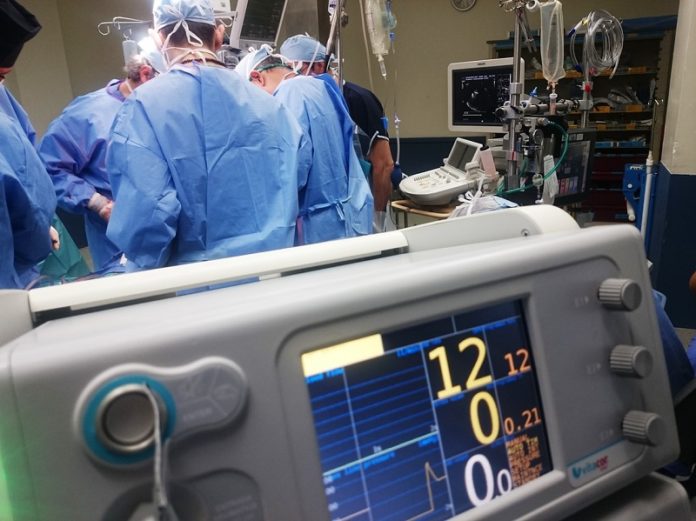The ongoing pandemic is a major factor in pushing the healthcare sector’s digital transformation. However, technology experts believe that baseline security and safety of patients and clinicians is still the priority over forward-looking technologies that hospitals are being persuaded to adopt.
In a panel session the Healthcare Frontiers 2020 Conference, Thierry Chau, CommScope’s Senior Director for Business Development, expressed that the key to achieve real innovation is to design based on the actual needs of an organization.
“Connectivity and technology are just tools to help you do and get the job done. Sometimes, people get enamored with the greatest and best technology but in healthcare, having the latest and greatest is not necessary the safest spot. So, what we try to consult on is to understand what it is that we are trying to do from the transformation and applications perspective,” he explained.
He said that unless a technology is built for the actual application and requirements, the healthcare industry will just be “cornered” to select on what is available and try to make it fit and workable for its needs.
Meanwhile, Chris Tan, Lenovo’s Client Technologist for Central Asia Pacific, stated that hospitals should also empower their doctors, nurses and other frontliners with the ability to suggest for needed changes.
“Each environment is different so they must be able to share and propose new tech that they should be adopting and then have a healthy debate with the top management to prioritize which projects will go through,” he further said.
Business Models and Standardization
As for Christian Orejudos, CEO of the Kunming LIH SkyCity Rehabilitation Hospital in China, the government’s issuance of a regulatory framework is crucial or industries “will not know how to move forward.”
He cited that at the beginning of the pandemic, developers offered solutions for free as a way of promoting technology but as businesses are now poised to go back to operations, companies will soon start charging the healthcare industry for such services.
“They (healthcare sector) cannot continue to work in a very hazy model because it really needs to be structured. I think to move forward, we’ve got to really put things in place,” Orejudos added.
Edison Dungo, Manila Doctors Hospital’s Director of IT noted that in an ideal scenario, a government-led standardized solution is needed for the entire hospital industry to avoid committing major mistakes related to digital transformation.
“There is a bit of cost attached to the technology and that’s the reason why we are trying to come up with quick ‘low-lying fruit’ solutions that will help our clinicians to digitalize whatever paper based information they have into a digital form,” he shared.
Dungo also said that thankfully, because of the advent of subscription-based services — compared to the capital expenditure approach that was prominent from years ago — the healthcare sector from developing countries can now avail quality innovations at more reasonable costs.
Chau agreed that the government has a role in convincing the healthcare sector to go digital but he said that going for public-private partnerships will further push the envelope.
The future is bright
All of them agreed that the pandemic caused a big disruption in all aspects of society, but a ‘silver lining’ is present particularly on the IT front.
“…Clinicians are really appreciating IT people for being quick and strategic in deploying technology to help frontliners and save lives. That’s where the silver lining comes in, despite all this mess and fear, there is always a solution that we can look forward to with the use of technology,” Dungo opined.
Orejudos added that all available technology in the healthcare sector — particularly telemedicine which has long been in existence but was never taken seriously before the pandemic — is suddenly a must-have service for hospitals.
As for Chau, he believes that this current attention given by the healthcare industry to come up with tech innovations is not just a one-time, big-time spurt as the “technology adoption curve was accelerated and a lot of the things that have always been there only needed the necessary push for serious adoption because of COVID-19.”
Meanwhile, Tan said that complacency had set in, and everything that was not obviously broken was neglected before the pandemic. However, he sees that going forward, most people are now more likely to move away from their comfort zones and will be more open to adopt new solutions.
“We don’t need AI to be available across every single area of healthcare, but we need the basic infrastructure to get digitization going. Things like just PCs or tablets and also make sure that at least basic internet connectivity will be up at rural areas. Once this baseline is reached, we will be able to introduce more technologies,” he emphasized.
Frontliners as the main influencers
However, despite all the optimism that is expected to be brought out by the faster pace of digitization in hospitals, panelists clarified that doctors and other clinicians have the most crucial role to play.
“The last people that we always involve in introducing any technology into hospitals are the doctors — because they are actually the hardest to get on board. How fast can we do a certain thing from a technology standpoint? Very quickly. But from a person perspective? Its not so quick and that’s always going to be the challenge,” Orejudos shared.
“We see this very often in China where hospitals have nice machines but when you go and see the use case scenario, it is really underutilized and not used very well… I see a lot of Internet of Things (IoT) enabled hospital equipment in China but after a while, it just becomes a regular item. Issue is: after you have adopted it, what are you going to do next?” he concluded.
















